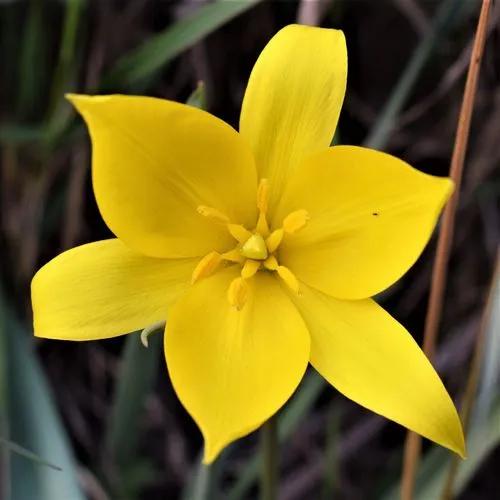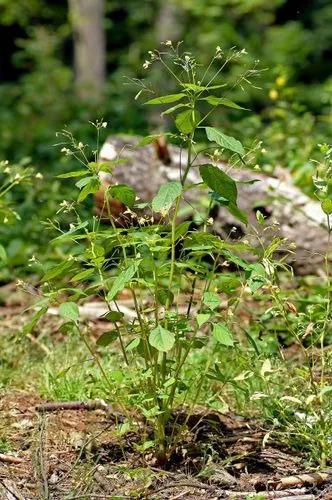Erythronium americanum, commonly called yellow adder’s tongue, yellow trout lily, yellow fawn lily and yellow dog-tooth violet, is a Missouri native spring wildflower that occurs in moist woods, on wooded slopes and bluffs, and along streams.
Trout-lily Care
Erythronium americanum



Erythronium americanum has a single, nodding, bell- or lily-shaped yellow flower blooms atop a naked scape sheathed by two glossy, tongue-shaped, tulip-like, basal leaves (to 6” long) in early spring. Genus name comes from the Greek word erythronion from erythros meaning red, originally the name for another plant. Plants may be grown from seed, but will not flower for 4-5 years. Quicker and better results are obtained from planting corms which are sold by many bulb suppliers and nurseries. Naturalize in moist soils in shaded areas of native plant gardens, shade gardens, woodland gardens or wild/naturalized areas. Also grows well in pond or stream banks or in shady areas of rock gardens.
How to Care for the Plant

Water

The plant prefers moist soils and can be grown near ponds or stream banks that have sufficient amount of moisture are all times.

Sunlight

The plant prefers a site in part shade to full shade.

Soil

Best grown in moist, acidic, humusy soils.

Temperature

The plant is not frost-tender and can be found in the areas with the lowest winter temperatures of −40°C (−40°F).

Popularity

187 people already have this plant 49 people have added this plant to their wishlists
Discover more plants with the list below
Popular articles






